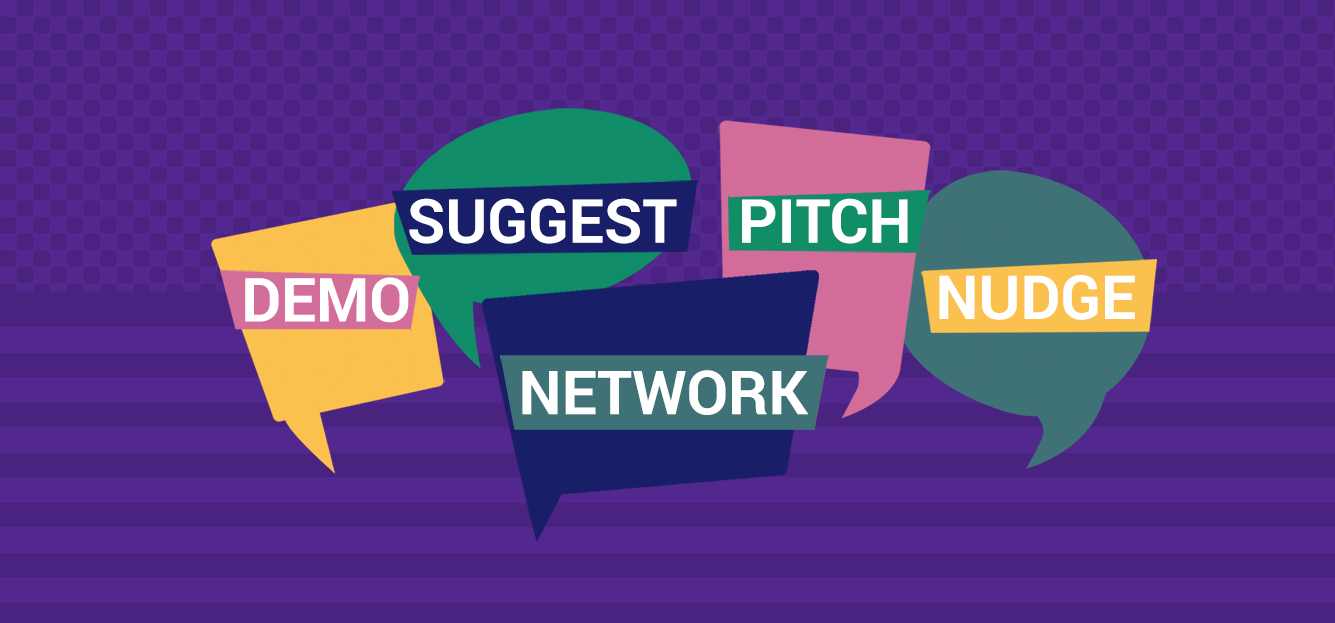
Cold email templates aren’t something you just copy and paste… tweak a few words… and then watch the sales roll in.
Whether you’re…
- Sending your first Gmail mail merge campaign
- Trying to schedule a new batch of sales calls, or
- You’re a seasoned cold email ninja
… cold email templates are your best friend.
Sure, you want (need) to personalize each email based on who you’re pitching. And you will.
But the truth is that when you’re sending a large number of emails, you need a framework that you can scale.
That’s where templates come in.
A few key templates can give you a way of scaling your outreach efforts while also making personalization systematic (i.e., easier).
For example, place a joke on line X and a personal note about their business on line Y.
It’s always the same structure — easy to visualize in your mind and plan when you’re crafting a campaign, while simultaneously simplifying the writing of the emails themselves.
Here are five of the most useful and versatile cold email templates we’ve ever seen, which you can use and adapt to virtually any situation.
5 Cold Email Templates for Any Situation
Run a quick Google search, and you’ll find a ton of cold email outreach templates you can grab and use instantly. The internet is a wonderful place.
The problem is, most are examples that have been used previously, in some cases by an entire company.
Why does that matter?
First, they’ve been ripped already, hundreds if not thousands of times, and reused by others — quite possibly in your same space.
Also, they often have nothing more than two or three sentences of explanation, which is not enough to understand how the email was crafted, only what the key gimmick is.
Because of this, you might take the “template,” change it up a bit, and think you’re set.
But then you don’t get the results you want and wonder where you went wrong.
That’s why, below, we’ll cover five real, fundamental templates. Plus, we’ll break them all down line-by-line so you’ll understand their inner workings.
After that, we’ll show you the fundamental elements that make a great cold email template. So, you’ll understand what makes a great cold email regardless of the purpose.
That way, you won’t be copying an example.
You won’t be taking someone else’s rehashed email that’s probably several years old.
You’ll have everything you need to craft great cold email templates that make your cold email efforts so much easier.
So, let’s start with the first template and one of the most common: a simple template to help you set up demos for your product (no matter what kind of product it is).
1. Cold email template to entice someone to schedule a demo
One of the most common uses of cold email is to schedule product demos or sales calls.
These days, that’s often for a SaaS sales pitch, but you can use the template below for any product with very little modification.
This email is longer than most of the templates we’ll provide, but it’s necessary to explain the product concisely. (Call it an MVD or “minimum viable description.” Yes, I just made that up.)
Here it is:
Why this template works
Product demo or sales emails can often feel bloated.
It’s easy to say too much and turn off your reader before they ever get to your CTA.
After all, anyone in charge of product adoption at a company is probably going to be busy.
However, it’s also necessary to explain what you’re offering. Otherwise, why would they want to schedule a time to see what you’ve got?
This template strikes the right balance between those two needs, getting to the point relatively quickly but also offering clear and relevant value.
In this template, the first line is the most difficult. You’re not just introducing yourself, but also summarizing your product or service in an enticing way:
These next two lines are important because it’s tough to find the right contact when you’re trying to schedule a demo.
You might just need to go with anyone you can find that appears to be on the relevant team, so you can’t be sure if they’re the decision-maker:
Then you finish with a clear CTA, making it explicit what you’d like them to do, whether they are the right person or not:
If you know you have the right person, you can make the CTA even clearer by adding two suggested times for them to pick from.
For more examples and inspiration, check out our entire collection of B2B cold email templates.
2. Cold email template to pitch your services
Assuming you’re not a SaaS seller (in which case the previous template is probably more relevant to you), pitching a service can be difficult.
That’s because you have nothing concrete to offer in your email.
However, with the right template, pitching your service can become much easier.
For example, with this template:
Why this template works
If you’re in the service business, cold email is way more effective than sales calls.
In the blink of an eye, you can send out an entire campaign to dozens of prospects (which GMass can help you do). Even if you don’t get a response, you’ve created that first touch-point, and now you’re off to the races.
This email, in particular, is great for a few reasons.
It’s based on legendary copywriter John Caples’ example, and it includes a few important parts.
In the first line, you draw a credible connection to them that makes it personal:
If you’re not a user of their product or a fan of their work, don’t worry.
You can offer any kind of praise or admiration for their recent work or success.
Next, in the same line, I’m getting straight to the point and mentioning why I’m emailing them. Boom.
Then I’m dropping some personal credibility not just in a sentence but with a succinct list (everyone loves lists):
And then I’m moving straight to the close.
But I’m not just asking for a time to talk, I’m specifically saying I have ideas that I think can help improve some aspect of their business, this works very well for piquing curiosity:
If you’re a recruiting manager who wants to use this type of cold email template and framework for your outreach to candidates, check out even more examples with our recruiting email templates.
3. Cold email template to entice a response by teasing a “one big thing” hook
Similar to the previous template, this one is even simpler but just as powerful.
This one comes from a different angle, though.
As opposed to it having a specific purpose, this email uses a specific strategy: finding one thing, preferably an improvement, they can make, and offering to have a quick chat about it or show them how they can fix it:
Why this template works
This template is great because it’s hyper-focused on the value you can give them:
It’s not the kind of template you can use every time, but depending on your product or service and how much information you can dig up about them, if you can pull it off, it can be super compelling.
Another great part about this email is that the CTA is clear. They know exactly what is in store for the call, which makes them more likely to respond:
4. Cold email template to network or create a connection
Networking through cold email can feel pretty awkward and inauthentic, considering that you’re trying to create a genuine connection with a person you don’t know yet.
However, if done right, it can be very effective without coming off awkward or needy.
Here’s an example:
Why this template works
There are just two pieces to this email, but those make it quite different than any other kind of cold email template.
First, the intro makes a connection and offers a compliment. Nothing new there. However, you then transition to a talking point, something that would interest them:
Then pitch your conversation starter:
For the CTA/conversation starter, you need to make sure your question is well-thought-out.
You want to pique their interest on a subject you think they’d enjoy talking about and ask a smart, insightful, or entertaining question.
This kind of template is harder to replicate. However, what it costs in effort it makes up for in simplicity since you need just two things:
- The content, and
- A conversation starter/question
By the way, this same approach can be very helpful when using cold emails for job searches. or when you’re sending prospecting emails (and want templates for those).
5. Compelling cold email follow-up template
Are you sending a follow-up email for non-responses?
If not, you’re missing out on one of the single most important elements of any cold email strategy.
Here’s an example:
Why this template works
The reality is, most people you email are busy. And most people you email have inboxes that look like, well… a war zone.
So the follow-up needs to be simple and get the point across in fewer words. (They can check the email thread if they didn’t get the original email — or, with GMass, you can send your automated follow-ups as replies in the same thread.)
If they got your original email, they already know your topic. So your follow up can be so succinct; it just has to rephrase your offer and close in two simple sentences.
That’s why this works. If you do follow up, you might just be asking them what they thought about your original offer and leaving it at that.
The problem with this is you’re making your original email pull the weight while they’re responding to your new email.
For the follow-up email to work, you need to rephrase your offer + include another CTA:
To take your follow-up email to another level, you can even add a personal message at the beginning:
This works because you’ve already sent them one email. You might not have actually met them prior to this or have any connection, but the fact that you’ve messaged them before creates a kind of bridge so that this seems natural.
Think about when you meet someone and exchange introductions. As soon as you know their name and shake hands, that layer of total unfamiliarity immediately melts.
Now, you’re no longer strangers.
This can often make the follow-up email even more effective than your original email, as you’re moving it from being cold to warm(ish).
And if you want even more cold email follow up templates, check out our even more in-depth guide on the art of the cold follow-up.
What makes a good cold email template?
So far, I’ve covered simple but effective cold email templates for just about every situation (anything beyond that ventures into lukewarm territory).
Also, I broke down, line-by-line, why they work.
I did this not just so that you’ll understand why that specific template works, but so that you know, fundamentally, what makes an effective cold email.
However, let’s take it a step further.
My goal with this post is not to spit out a few templates and call it a day.
Of course, you’ll want to start with the best cold email software program. But beyond that, I want you to be confident that you can craft great cold email templates for your own specific purposes, every time.
The truth is, your space, product, or service might require a bit of a different angle.
Maybe it’s a certain tone that’s not usually taken in cold emails. Perhaps you’re trying to set up live in-person demos with local businesses, or something else unique.
So, it’s not enough to have these templates; you need to know how to create your own customized templates.
That’s because the more customized your cold emails are to your prospects, the better they’ll perform.
So, let’s talk about what makes a good cold email template.
These are the universal elements that you need to include in your templates no matter:
- The space in which you’re operating
- The CTA you’re including, and
- The person to whom you’re talking.
First, you need a compelling subject line.
Cold email template fundamentals #1: Compelling subject line
Cold email subject lines are an art in themselves, so if you want to learn more about how to craft a great one, read our guide: 43 Cold Email Subject Lines That Get Your Emails Opened Instantly (and When to Use Them).
The reason your subject line matters is simple: if they don’t open the email, that prospect is dead in the water. Game over.
In fact, it’s worse than that.
According to a study by Convince & Convert, 69% of people report an email as spam just by reading the subject line.
That’s it. They don’t even click on the email and read what it says. In return, your deliverability is in jeopardy.
All that work you spent writing a great intro line and a powerful CTA will be completely wasted if they don’t first open the email.
And you get them to do that by crafting a great subject line.
When it comes down to it, there are three main rules you need to follow to create a great subject line:
- Keep your subject lines short
- Don’t use clickbait subject lines
- Offer something enticing
Keep your subject lines short
First, let’s get the easy one out of the way. Short subject lines get more clicks. Simple and easy.
Like this one, if you’re emailing YouTubers or influencers (substitute “subs” for “followers”):
Mobile phones display 25 to 30 characters for email headings in the average email app. If you can manage it, try to keep your subject lines at or under that length.
This isn’t always possible, and it also depends on your target market. (Professionals are more likely to read on their computer, but even so, don’t overlook mobile.) However, shorter is better.
Don’t use clickbait subject lines
Clickbait won’t necessarily increase your open rate, but using it will virtually guarantee your response rate will tank for those that do open.
One of the worst things you can do is break your promise, and what you’re promising doesn’t start when they first open your email — it starts in your subject line:
If your subject deceives them in terms of what your email is about just to get them to open your email, they’ll hit the spam button and call it a day. Even if they don’t hit the spam button, they certainly won’t respond.
You’re not trying to get short-term results (a high open rate) but long-term success (actual conversions), so invest in honest communication that builds trust instead of tearing it down, especially when you’re sending cold emails.
Offer something enticing
This might be the most important point of all because it’s the one thing that makes your subject lines clickable.
By enticing, I mean, make your email interesting enough that it promises something of value to the recipient.
That could be something that interests them, something you’re offering them, or even just humor. (People are attracted to honest human interaction, and humor is always appealing.)
For example, this subject line might speak directly to my prospect if they’re hiring managers:
You could also come at them from a different angle, not mentioning them outright but something associated with the benefit of your product or service.
Like this, if your product offers healthy pre-made meals for children:
Either way, you’re speaking directly to them, which is one of the most powerful ways to offer the promise of value.
Cold email template fundamentals #2: Speak their language
This is a deceptively simple point, but just as important as any of the others.
These days, most digital spaces welcome an informal, casual tone. If you send an email in a stuffy, overly formal professional tone, you’ll sound like a greedy robot who doesn’t care.
Don’t do that.
Then again, the point isn’t to sound casual and friendly.
Some spaces, like finance, and some purposes, like seeking investors, require more professionalism. If you sound too casual, you’ll come off as a joke and won’t be taken seriously.
The point is, rather, to sound like… well, them.
You want to speak their language, communicate with them as if you’re on the same wavelength.
It tells them that you understand them and what they’re doing, and it forms a kind of immediate mental connection.
So, if you haven’t already, get to know your prospects.
Dive deep into their mind so that you can understand what and how they think.
Then write something you think would interest and resonate with them specifically.
Cold email template fundamentals #3: Just one relevant, clear, and value-based CTA
Having a CTA is obvious.
The thing is, I often see cold emails come through without one of these three things:
- The promise of value
- Relevance
- Clarity
Just asking them for a time to talk because you’re a fan of the product, work in the industry, or you have something to pitch them isn’t good enough.
Why should they care?
Maybe it’s relevant to them because they enjoy talking shop about their profession, but it doesn’t promise value to them, so it won’t be as effective.
Sure, you might get a response, but you won’t get as many responses as you would if you had infused that same CTA with value.
For example, this is the same approach but with a super-specific value proposition added:
A quick five-minute chat, and you get a potentially useful idea to improve your product from a fan.
Could you pass that up? I didn’t think so.
This CTA is also relevant, though, because it has to do with their product.
If it had to do with a product you say could make them more productive throughout their workday, it’s still relevant, but much less so.
I’d be far less likely to respond to that than to someone offering quick and potentially valuable feedback about my product.
Lastly, make sure your CTA is clear. Don’t ask for coffee, ask for coffee Monday at 2 PM, or Tuesday at 4:30 PM EST, and ask them which they’d prefer.
That clarity will further increase your response rate because you’re making it as easy as possible for them to respond.
Cold email template fundamentals #4: Personalize, every time
Personalization is one of the most important principles of a good cold email.
The last thing someone wants to read is something that looks like it was written for a thousand other people.
Notice looks is italicized, and for good reason.
A good cold email template very well might be written for 1,000 people, but with a bit of personalization, it becomes specific to one person, and they feel it.
To them, you’re writing the email personally for their eyes.
For example, if you’re trying to network, mentioning a book they wrote or a subject they’re interested in is a great way to create an instant connection on the first line:
When you do that, you’re communicating on a basic human level. People respond to that because we’re all attracted to authentic connection with other human beings.
If I can tell that you’re a real human reaching out personally to me and that you’re offering something potentially of value, I’m far more likely to respond.
At GMass, we’ve spent years crafting our cold email platform to help your mass emails look like personal, one-on-one emails. That includes the ability to send messages as replies; to add personalization beyond just your standard mail merge options including entire paragraphs, links, images, and attachments; and to automatically detect first names from just an email address.
Make your mass emails feel like personal emails and you’ll make a stronger connection every time.
Cold email templates and beyond: Final thoughts
Templates are the best place to start, but no one knows your business or prospects better than you.
Take these cold email templates, along with the tips I have just covered for crafting an effective cold email template of your own, and do more than reuse others’ examples.
The truth is, once someone makes their examples public knowledge, everyone takes them and reuses them, which makes them far less effective.
But by taking these templates along with a good working knowledge of the fundamentals of a good cold email, you can craft effective cold email templates of your own that:
- Get responses
- Closes prospects, or
- Kindle a profitable business or career connection
(Or all of the above.)
So, learn the fundamentals of good cold email templates and good cold email strategy in general.
By doing so, you’ll become an email ninja who can create your own effective templates specifically crafted to your prospects and purposes, instead of being a rehasher and leaving your results up to hope and chance.
And don’t forget to check out our other guides on crafting crazy-good cold emails:
- The Complete Cold Email Master Guide (Start here.)
- Our cold email copywriting guide is filled with tips and templates.
- Some more great templates: 5 High-Yield Cold Email Outreach Templates
- Everything you’ve ever wanted to know about crafting great subject lines: 43 Cold Email Subject Lines That Get Your Emails Opened Instantly (and When to Use Them)
- Get more responses: 6 Ways to Write Highly Effective Cold Emails That Get Responses
- Increase your outreach ROI (you’ve never seen these tips before): 3 Clever Ways to Drastically Increase Your Cold Email Outreach ROI
Ready to put these cold email templates to work? Get started with GMass for free and send your personalized cold emails that get the results you’re looking for.
Email marketing. Cold email. Mail merge. Avoid the spam folder. Easy to learn and use. All inside Gmail.
TRY GMASS FOR FREE
Download Chrome extension - 30 second install!
No credit card required

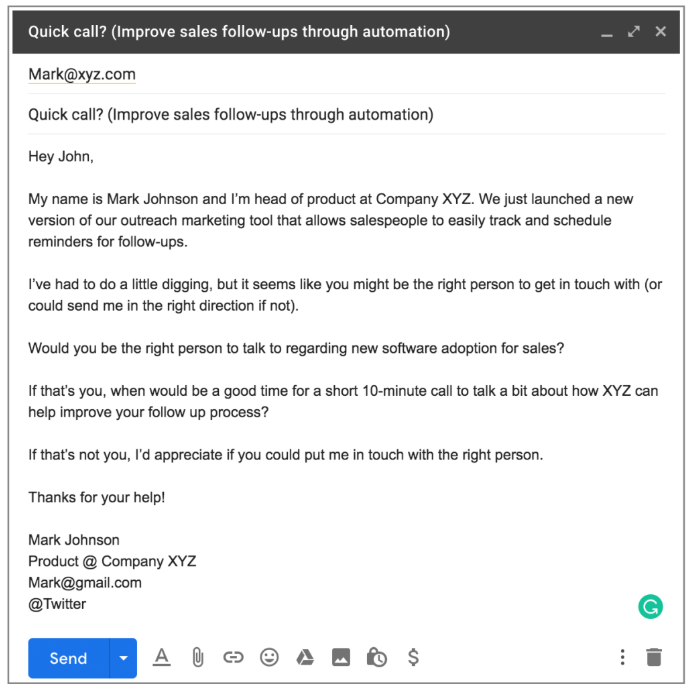



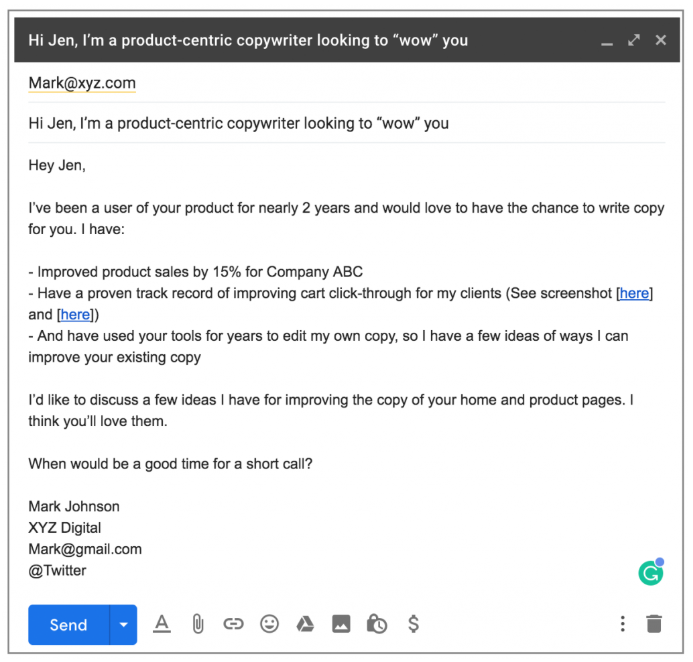



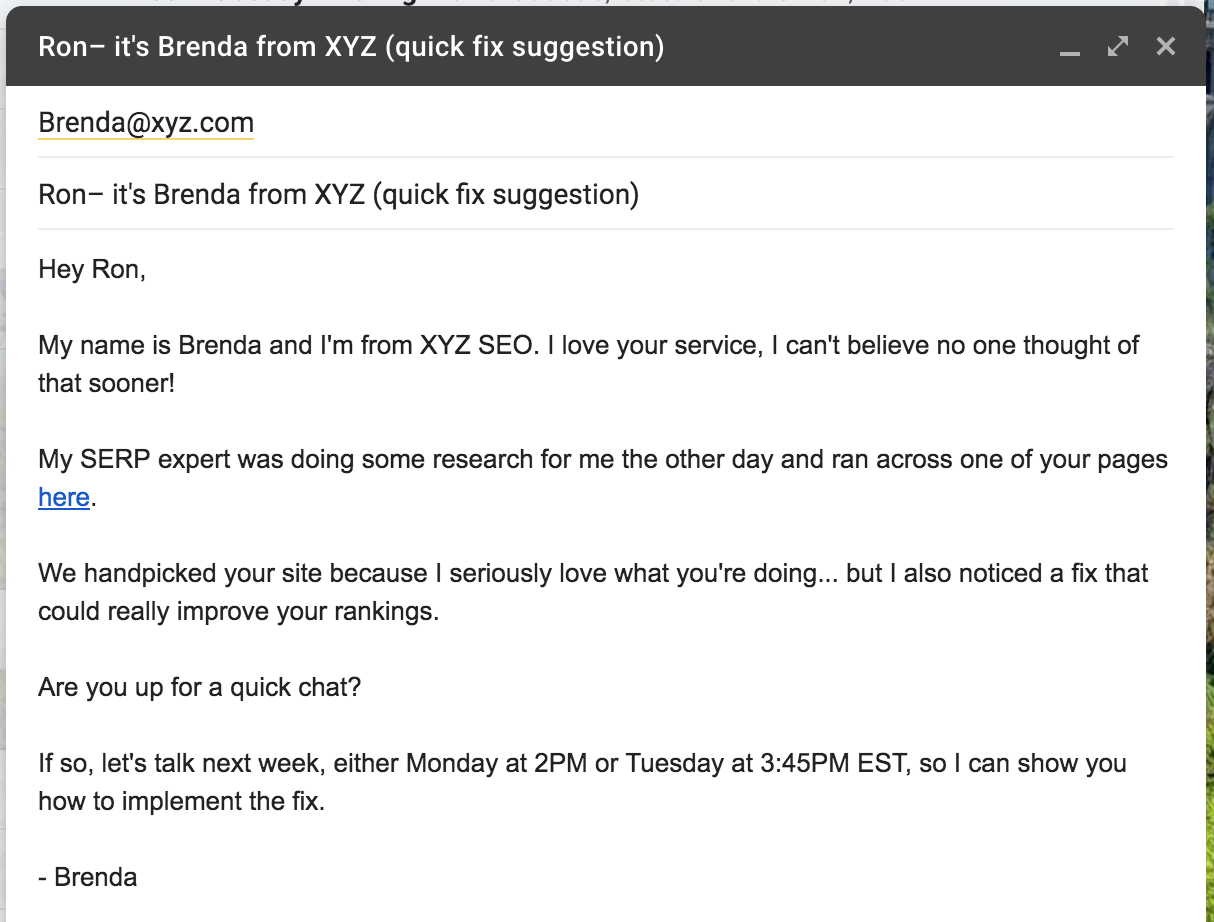
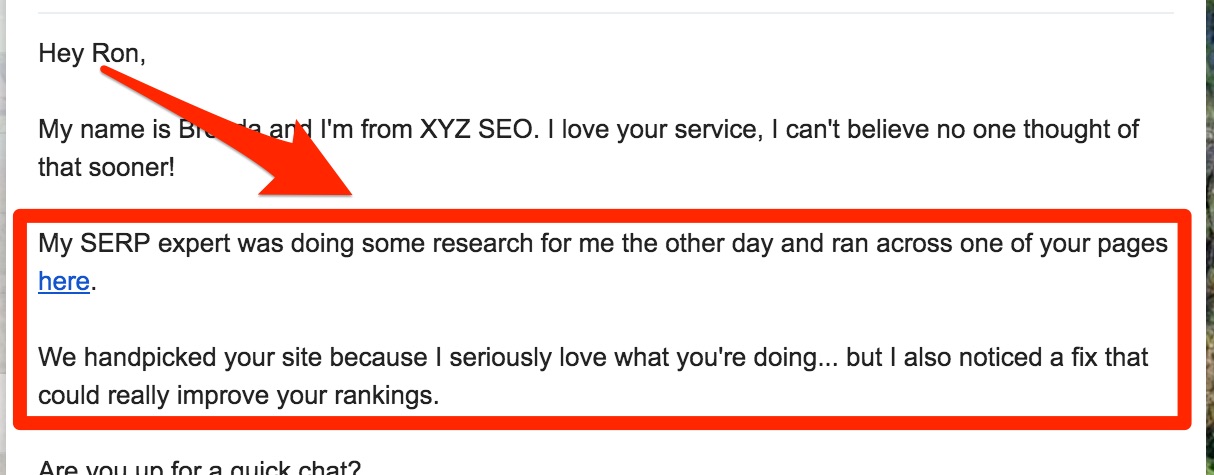

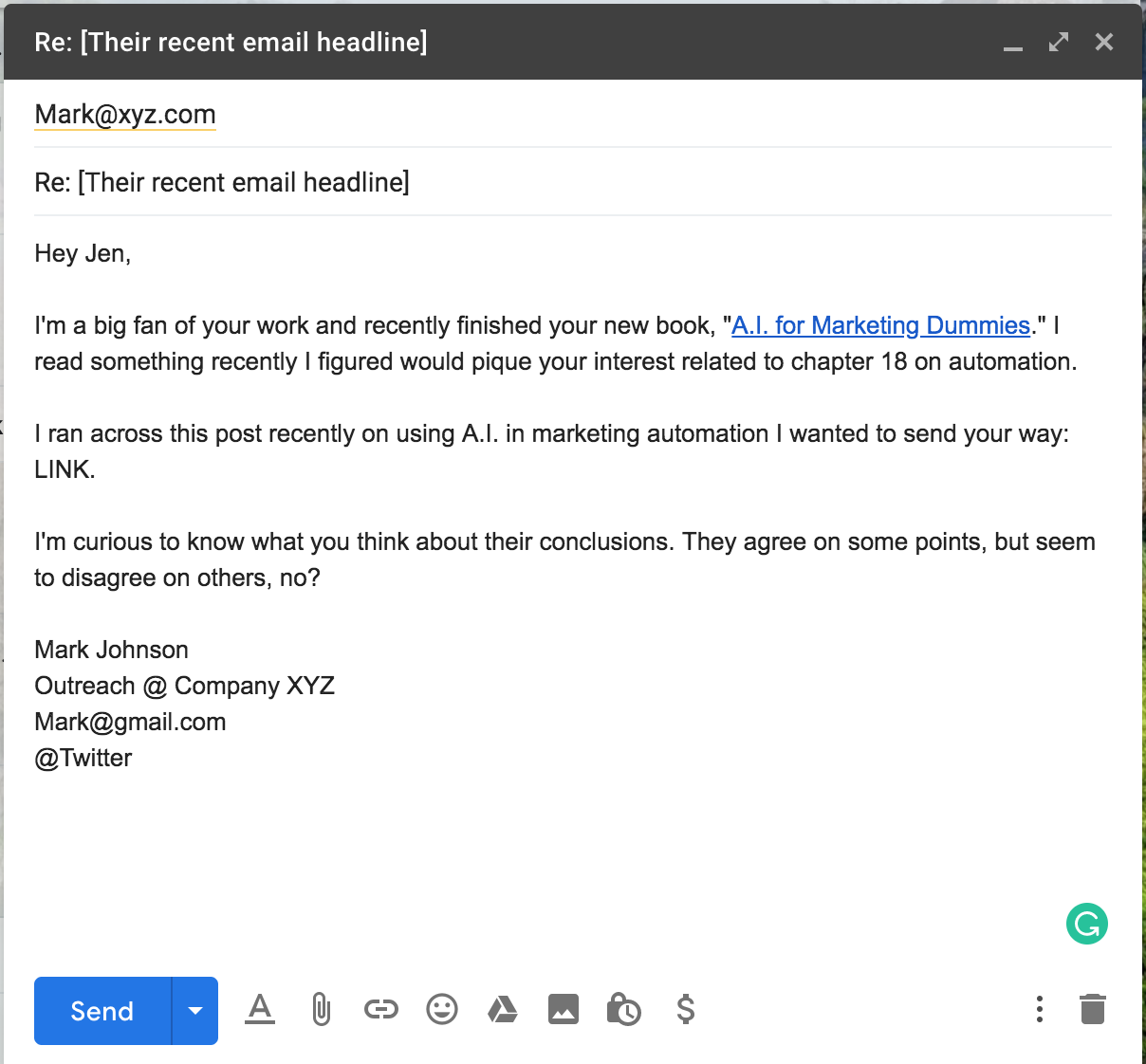


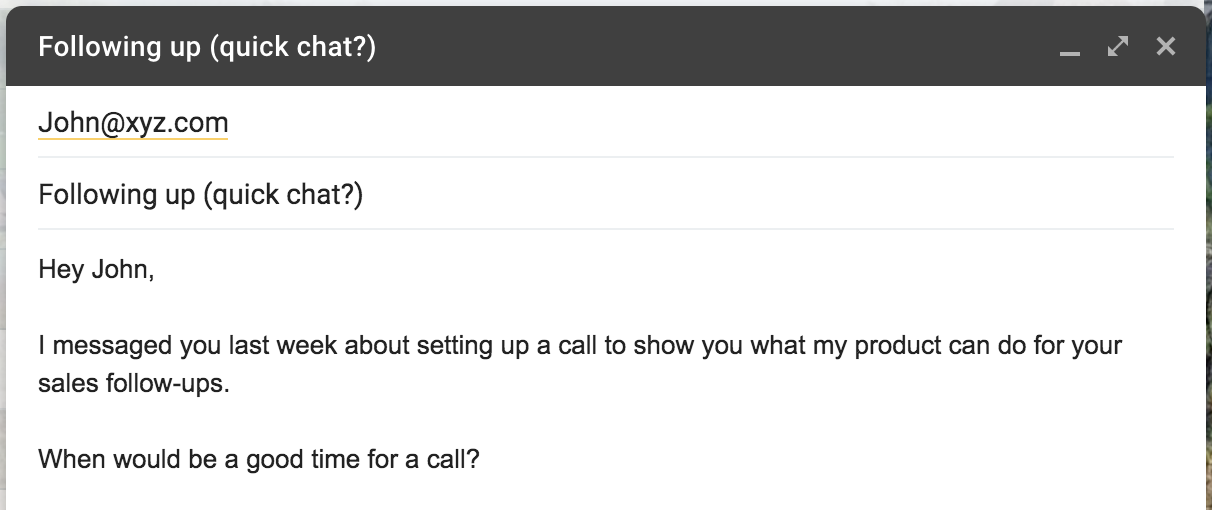

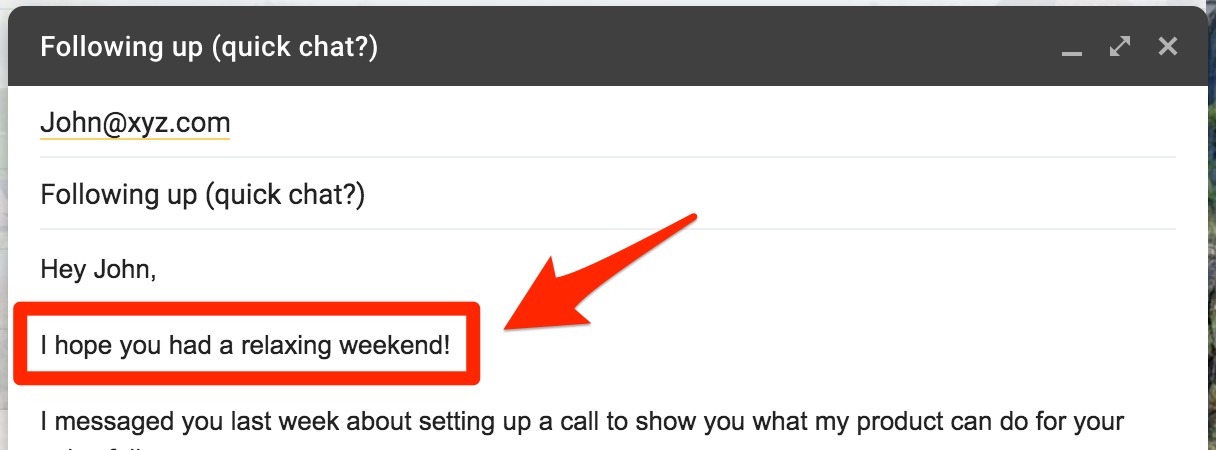
















Hi sir i want to learn on how to cold email my nutritional product so could you please create me one?..Thank you.
This template can be used to share any form of content, including articles, videos, infographics, and other informative content. Make sure that you’re linking to a helpful, relevant piece of content. For initial cold emails, make sure that the content is easily digestible. Prospects are unlikely to read a 50-page paper or watch an hour-long video.